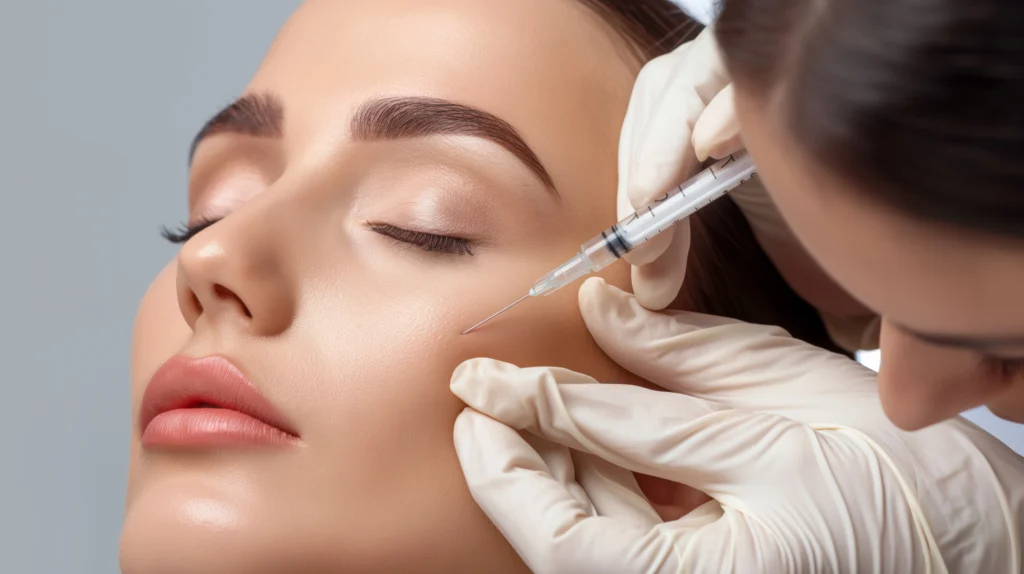Skin bio-revitalization injections are one of the most sought-after non-surgical treatments for improving hydration, elasticity, and overall skin quality. Although they’re minimally invasive, proper aftercare is crucial—especially if you’re an international patient continuing to travel, tour, or fly home shortly after your procedure.
This guide outlines everything you need to know to maximize results and minimize complications after treatment while abroad.
✅ Immediate Post-Treatment Care (First 24–48 Hours)
1. Expect Mild Reactions
- Temporary swelling, redness, small bumps, or pinpoint bruises are common and normal.
- These typically subside within 24–72 hours.
2. Do Not Touch or Rub the Treated Area
- Avoid massaging or pressing on the injection sites.
- Let the product settle naturally into the dermis.
3. No Makeup for 24 Hours
- Avoid applying foundation, BB cream, or powder to prevent irritation or bacterial contamination.
- Stick to gentle moisturizer and sunscreen if needed.
4. Avoid Extreme Temperatures
- No saunas, steam rooms, hot baths, or hot yoga for at least 48 hours.
- Avoid direct sunlight; your skin is more sensitive post-procedure.
5. Sleep with Head Elevated
- Use an extra pillow to reduce swelling and fluid accumulation in the face.
✅ Short-Term Care (First Week After Treatment)
1. Sun Protection is Essential
- Apply broad-spectrum SPF 50+ sunscreen daily.
- Wear a wide-brimmed hat and avoid peak UV hours (11 AM–3 PM).
2. Use Gentle, Hydrating Skincare Products
- Choose fragrance-free, non-exfoliating cleansers and moisturizers.
- Avoid alcohol-based toners, acids (AHA/BHA), vitamin C serums, and retinoids.
3. Avoid Strenuous Activities
- Refrain from heavy workouts or activities that cause excessive sweating for 3–5 days.
- Sweating may introduce bacteria into the injection sites.
4. Do Not Schedule Other Facial Procedures
- Wait at least 2 weeks before getting facials, lasers, peels, or other skin treatments.
✅ Flying and Traveling After Treatment
1. You Can Fly Within 24–48 Hours
- Most international patients are safe to fly within 1–2 days after treatment.
- However, wait at least 24 hours to ensure swelling has subsided.
2. Hydrate In-Flight
- Drink plenty of water to maintain skin hydration.
- Use a travel-friendly facial mist and moisturizer to keep your skin barrier intact.
3. Avoid Alcohol and Salty Foods
- Both can worsen swelling and delay recovery.
✅ Long-Term Maintenance
1. Follow Your Treatment Schedule
- Bio-revitalization is often done in a series of 3–4 sessions spaced 3–4 weeks apart.
- If you cannot stay in Korea for multiple sessions, ask about coordinating your schedule with a local clinic back home.
2. Stay in Touch with Your Korean Clinic
- Many Korean clinics offer remote follow-ups via WhatsApp, KakaoTalk, or email.
- Send photos and updates to monitor healing and get advice from your doctor.
3. Skincare Supplements Can Help
- Some dermatologists recommend supplements containing collagen, hyaluronic acid, or antioxidants (like vitamin C or glutathione) to support skin healing.
⚠️ When to Contact the Clinic Immediately
Seek medical attention or contact your Korean clinic if you experience:
- Severe or worsening redness, pain, or swelling
- Signs of infection (pus, fever)
- Hard lumps that persist beyond a few days
- Blanching or pale areas that may indicate vascular issues
Sample Daily Aftercare Routine (Days 1–7)
| Time | Routine |
|---|---|
| Morning | Rinse with lukewarm water → Apply a gentle, hydrating moisturizer → Use SPF 50+ sunscreen |
| Afternoon | Reapply sunscreen as needed if outdoors → Mist to keep skin hydrated |
| Evening | Cleanse with gentle, non-foaming cleanser → Moisturizer (can add healing cream if advised) → Sleep with head slightly elevated |
Final Tips for International Patients
| Tip | Why It Matters |
|---|---|
| Take photos daily | Helps track healing and can be shared during virtual follow-ups |
| Use travel insurance | Ensure it covers medical-related emergencies while abroad |
| Stay at a clinic-recommended hotel | Some accommodations offer post-treatment amenities (air purifiers, blackout curtains, room service) |
| Allow recovery days | Plan sightseeing for later in your trip, after the initial healing phase |
In Summary
Post-treatment care after skin bio-revitalization in Korea is simple but non-negotiable if you want smooth healing and long-lasting results. International patients should take extra precautions while traveling—protecting their skin from sun, irritation, and dehydration while staying in close communication with their clinic.




